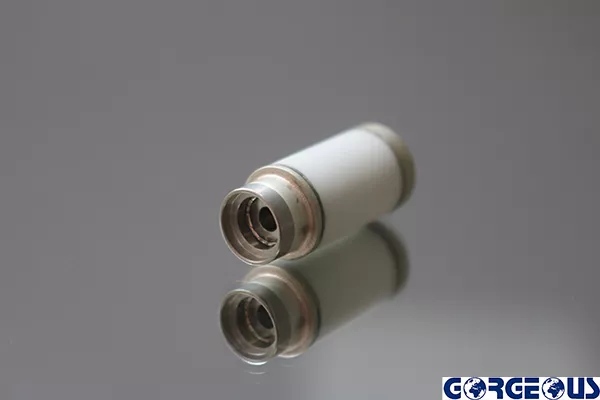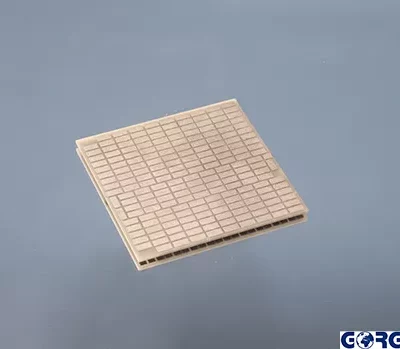What’s the biggest concern for customers aboat ceramic brazing ? How to solve?
Ceramic brazing itself is a relatively technical process. Ceramic itself is difficult to fuse with metal. There are relatively mature processes such as mechanical connection, adhesive, welding/brazing and glass-metal sealing, including microwave welding and ultrasonic. Welding and friction welding, etc., brazing is currently a relatively mature process technology. Commonly used in ceramic-metal connectors of engineering ceramics. We use innovative brazing technology and welcome customized samples!
Ceramic brazing is a valuable technique for joining ceramics and metals, but it does come with its own set of challenges. Let’s explore two of the top customer concerns and how to address them, along with other important actions:
1. Wettability and joint strength
Challenge: Unlike metals, ceramics cannot form strong natural bonds with metals due to different surface properties. This can lead to brittle brazed joints and possible failure under pressure.
Solution 1: Active Metal Brazing (AMB)
Reactive metal brazing uses brazing alloys containing highly reactive metals. This active metal helps the brazing material spread and adhere (wet) to the ceramic surface, creating a stronger bond.
Solution 2: Metallization
Metallization involves applying a thin layer of metal to the ceramic surface before brazing. This layer improves the wettability of the ceramic, allowing the brazing material to form a stronger bond.
Diagram of the metallization process showing ceramic being coated with a thin layer of metal
Solution 3: Brazing Material Selection
Choosing the right brazing alloy is critical. An alloy with good wetting properties for the specific ceramic used will produce a stronger joint.
2. Thermal expansion and residual stress
Challenge: Ceramics and metals often have different coefficients of thermal expansion (CTE). This means that they expand at different rates when heated (during brazing) and contract at different rates when cooled. This mismatch can stress the joint and lead to cracking.
Brazed ceramicmetal joint with stress cracks
Brazed ceramic-metal joints with stress cracks
Option 1: Joint Design
Optimizing joint design can minimize stress concentration points. This may involve using tapered joints that distribute stress more evenly or incorporating flexible elements to absorb some of the expansion/contraction mismatch.
Solution 2: Brazing Material Selection
Selecting a braze alloy with a CTE close to the average CTE of the ceramics and metals being joined can help reduce stress build-up.
Solution 3: Brazing process control
Precise temperature control and cooling rates during brazing are critical to minimizing residual stresses. Techniques such as vacuum brazing, which can remove oxides that hinder brazing, can also be helpful.
Other important measures
Surface cleanliness: Brazing surfaces must be thoroughly clean and free of dust, oil and contaminants. Brazing should be performed in a dust-free environment. Special cleaning and purging using the inert gas nitrogen helps ensure a clean surface for optimal brazing results.
Defect detection: After brazing, the joint should be inspected for defects using techniques such as X-ray flaw detection equipment. This helps identify cracks, gaps, or other defects that could compromise the integrity of the joint.
Leak test: Brazed joints should be leak tested to ensure they are air tight. This usually involves a two-step process:
Negative pressure vacuum test: Use a vacuum pump to evacuate the joint to a minimum pressure of 5000 Pa (0.5 atm).
Positive Pressure Tightness Test: Use inert gas to pressurize the joint to at least 4.2 MPa (42 atm). If the joint can withstand this pressure without leaking, it is considered qualified.
By taking these combined measures, the company can create strong, reliable, leak-free ceramic-to-metal joints that meet customer needs.
Ceramic brazing is an advanced process technology for joining ceramic materials. aerospace:
We have prepared a clean room for this purpose to improve their bonding and connection strength; especially in frequent use of high strength and high temperature resistance. This technology is commonly used in areas including:
Aerospace:
In the aerospace industry, ceramic materials are used to make engine parts and other parts that are exposed to high temperatures because ceramic brazing allows these parts to withstand extreme temperatures and pressures.
Automobile industry:
In the automotive industry, advanced ceramic materials are used to make heat exchangers, sensors and other critical components. Using ceramic brazing technology, these components achieve high efficiency and durability.
Electronic product:
In electronics manufacturing, ceramics are used as insulators and substrates. Ceramic brazing can make high-performance electronic components stable, reliable and safe under high temperatures and other harsh environments.
Medical equipment:
Ceramic materials are commonly used in medical devices such as artificial bones and dental implants due to their biocompatibility. Ceramic brazing ensures the structural integrity and long-term durability of these devices.
Energy industry:
In the nuclear and other energy industries, ceramic materials are used to create high-temperature and corrosion-resistant components. Ceramic brazing technology ensures the reliability and safety of these critical components.
Optical and laser technology:
In optical and laser technology, precision ceramic components need to be connected to metals or other materials via ceramic brazing to ensure precise light transmission and reflection.
The application of ceramic brazing technology in these fields is mainly due to its ability to provide high-strength, high-temperature-resistant connections while maintaining the chemical stability and physical properties of the material. This makes it an indispensable technology in high-tech products and complex systems operating in extreme environments.
There are several standard specifications for ceramic brazing, each with its own focus and requirements. Here are some of the most commonly used standards:
1. ASTM B828 - Standard Specification for Brazed Copper-Nickel-Silicon Alloy Flanges for Pressure Vessels and Piping
This standard covers the requirements for brazed copper-nickel-silicon alloy flanges for pressure vessels and piping. It specifies the materials, dimensions, markings, testing, and inspection procedures for these flanges.
2. AWS C3.1 - Standard Specifications for Brazed Joints for Pressure Applications
This standard provides general requirements for brazed joints used in pressure applications. It covers the selection of brazing filler metals, joint design, surface preparation, brazing procedures, and nondestructive testing.
3. ISO 11849 - Brazing - Flanges of copper-nickel or nickel-copper alloy for pressure vessels and piping
This international standard is similar to ASTM B828 and covers the requirements for brazed copper-nickel or nickel-copper alloy flanges for pressure vessels and piping.
4. ASME Boiler and Pressure Vessel Code (BPVC) Section IX - Welding and Brazing Qualifications
This code provides requirements for the qualification of welding and brazing personnel and procedures. It is widely used in the power generation and petrochemical industries.
5. MIL-STD-2481 - Bonding and Joining of Metals and Nonmetals
This military standard provides general guidelines for bonding and joining of metals and nonmetals, including ceramic brazing. It covers topics such as surface preparation, brazing filler metal selection, brazing procedures, and nondestructive testing.
In addition to these general standards, there are also many industry-specific standards for ceramic brazing. For example, the aerospace industry has its own set of standards for ceramic brazing of aircraft components.
The specific standard that is applicable to a particular application will depend on the materials being joined, the intended application, and the applicable codes and regulations. It is important to consult with the appropriate authorities to determine which standards apply to your specific case.
Here are some additional resources that you may find helpful:
American Society for Testing and Materials (ASTM): https://www.astm.org/
American Welding Society (AWS): https://www.aws.org/
International Organization for Standardization (ISO): https://www.iso.org/home.html
American Society of Mechanical Engineers (ASME): https://www.asme.org/
U.S. Department of Defense (DoD): https://discover.dtic.mil/









